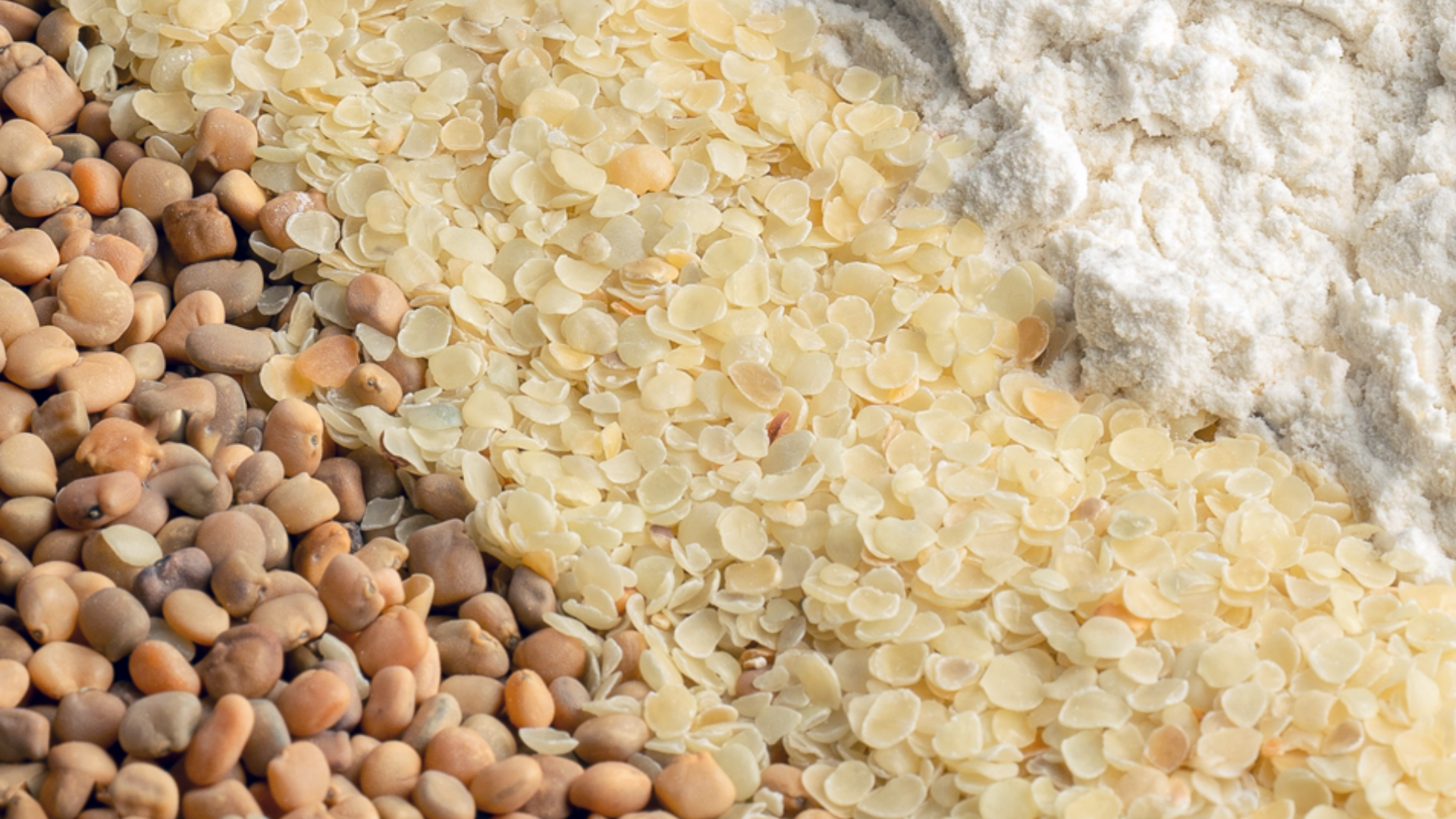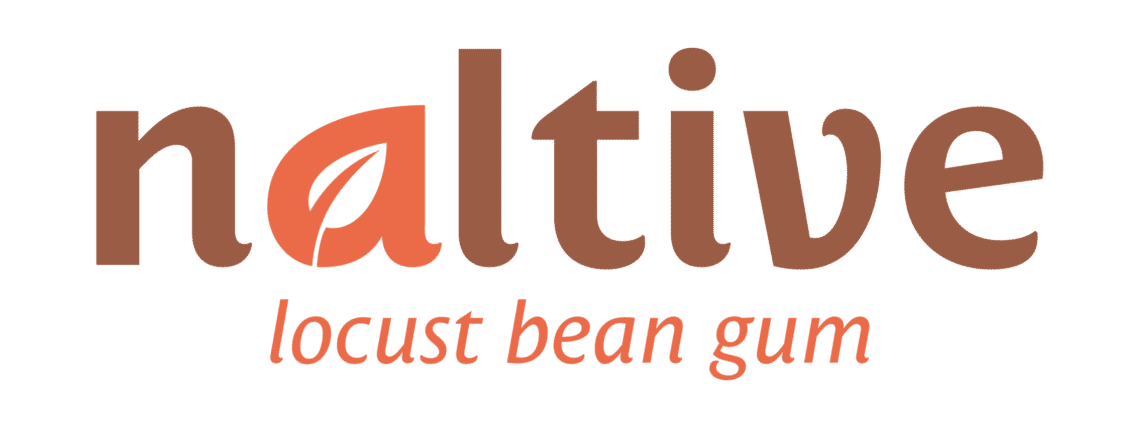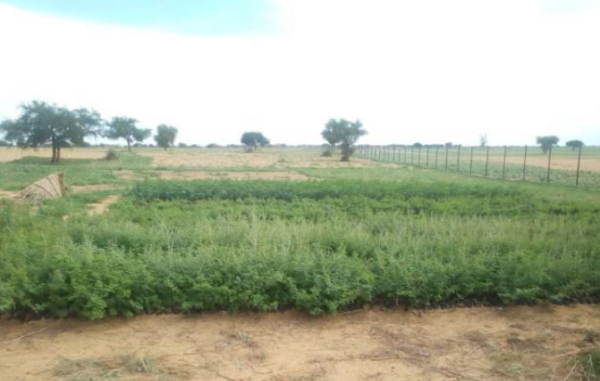Guar gum, Origin and Production of this Natural Gum
In this article, Nexira shares with you the story of guar gum, commonly used as a thickener and stabilizer in food and beverages, from the harvesting of the pods to the manufacture of the gum. These pods, which are the fruits of the Guar plant, contain the precious seeds of the bean from which Nexira’s Swiss factory naturally extracts top-quality guar gum.
The Cluster Bean, a Plant of Arid Regions
Guar (Cyamopsis tetragonoloba L.) is a annual plant from the legume family, cultivated in the arid and semi-arid regions, mainly in India and Pakistan.
The plant’s anatomy makes it interesting from an ecological and biological point of view: its deep roots give it good tolerance to drought and high temperatures, as well as a good capacity to fix nitrogen in the soil. It thrives in conditions of limited resources and has a good yield.
Guar plants measure 0.5 to 1 m in height, and produce pods ranging from 5 to 12 cm long. The plant has a main stem bearing 4 to 10 branches, and alternating leaves and flowers.
Did you know ? Guar is also known as cluster bean, because of the pods on its stem !
A Valuable Legume with Many Uses
The fruits of the Cyamopsis tetragonoloba L. are harvested every year during the rainy season, known as “kharif” in India, which lasts from June to October. India accounts for almost 80% of the world’s Guar production. Nexira rigorously selects carob producers for their quality, reliability and commitment.
Guar is a self-pollinating plant, which means that its flowers are hermaphroditic: the plant pollinates itself!
Seeds can be sown at two times of the year: early March and late July. To improve soil health and nutrient content, Guar is generally grown in a two-year rotation with pearl millet. It can also be grown with wheat, cumin or mung beans.
Guar pods are 5 to 12 cm long and each contains 5 to 12 seeds. At maturity, the pods dry naturally and are entirely brown in color.
Guar is also used as a vegetable, forage and green manure! In fact, the green pods are of particular nutritional interest for their high protein content. Guar by-products are used in animal nutrition!
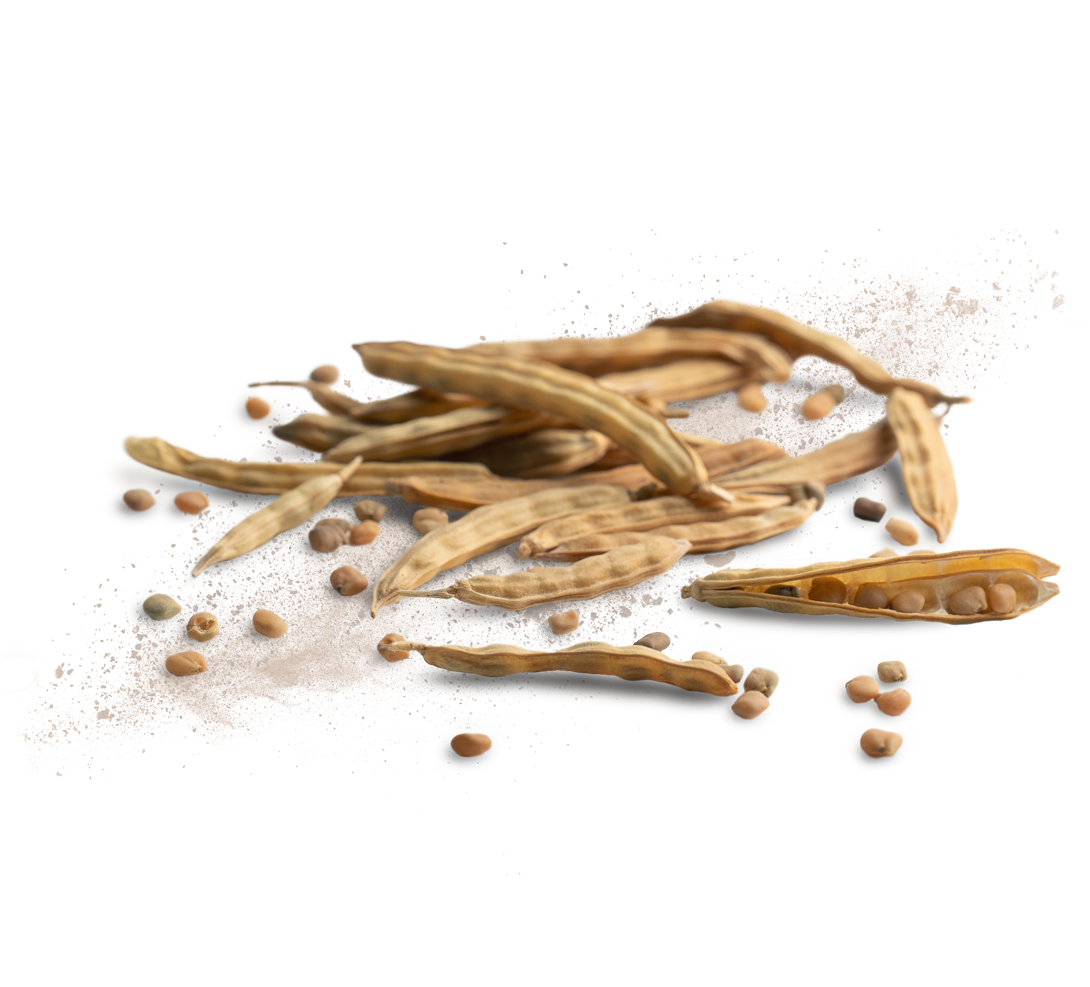
Guar Gum Process
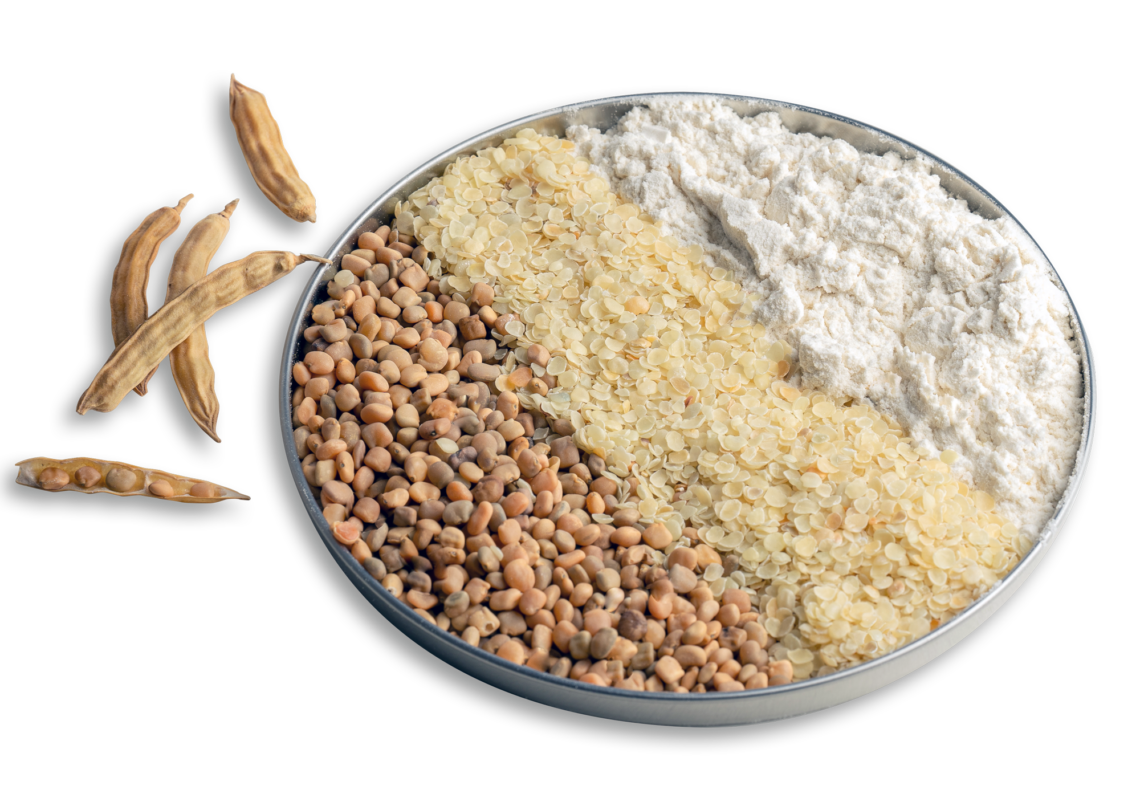
After harvesting, guar pods have already begun to dry naturally on the plant. Their moisture content is variable and depends on climatic and harvesting conditions.
The separation of the two fruit components is purely physical: the pods are beaten to free the seeds from their husks. In its Swiss factory, Nexira then mechanically processes the seeds to separate the various parts: tegument, endosperm and germ; and to obtain guar gum.
Guar Gum Powder: Uses and Benefits
Guar gum is used for its texturizing and thickening properties and its high level of syneresis control. Nexira has developed the naltive™ guar gum range, a complete range of guar gum specialties with specific and unique functionalities. It can be found in vegetable alternatives, desserts and ice creams, bakery products and sauces and seasonings.
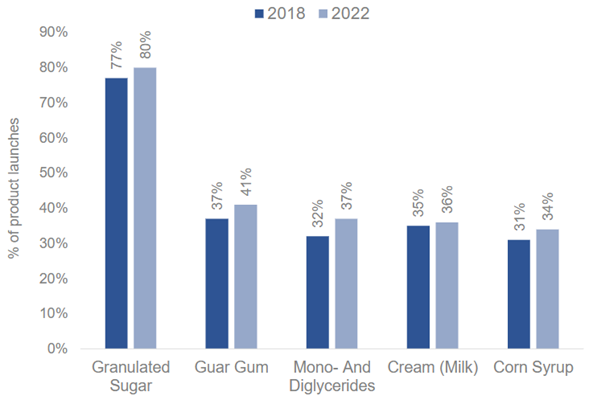
Naltive guar gum can be used in combination with other hydrocolloids to create a thick gel and help reduce syneresis. From plant-based products to ice creams, Nexira’s premium guar gum is easy-to-use in a wide array of applications.
Guar gum has emerged as a game-changer in the food texturizers market, tapping into the desire for clean label and natural ingredients. Locust bean gum and tara gum are also leading ingredients on this market.
Naltive™, a Wide Portfolio for Plenty of Applications
Create the perfect sensory experience with Nexira’s wide range of premium and performing texturizing ingredients!
The naltive™ line offers three types of hydrocolloids with locust bean gum being its flagship ingredient, tara gum and guar specialties. References are processed in Nexira’s factory in Switzerland with the highest quality standards:
Ready to formulate?
This communication is not intended to the final consumer. It provides scientific information for professionals only. Communications to the final consumer have to be checked according to local regulations in force, since the conditions of use are beyond our control. This statement has not been evaluated by the FDA. This product is not intended to diagnose, treat, cure, or prevent any disease.
https://acsess.onlinelibrary.wiley.com/doi/abs/10.1002/agj2.20415
https://www.sciencedirect.com/science/article/abs/pii/S0144861718308440
chrome-extension://efaidnbmnnnibpcajpcglclefindmkaj/https://krishi.icar.gov.in/jspui/bitstream/123456789/20912/1/Pub.89-CAZRI.pdf
chrome-extension://efaidnbmnnnibpcajpcglclefindmkaj/https://www.pakbs.org/pjbot/PDFs/44(SI1)/29.pdf
https://www.sciencedirect.com/science/article/abs/pii/S0926669012001975
https://www.sciencedirect.com/science/article/abs/pii/S0926669017303503
growth stages and developmental patterns of guar – Curtis & al. 2020
